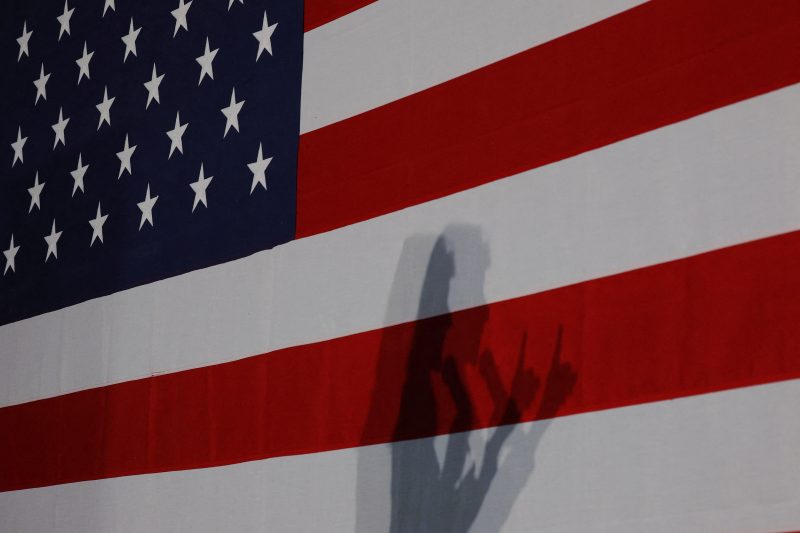
Haley’s race arguments try to reconcile U.S. history with GOP politics
In 1922, Takao Ozawa appeared before the Supreme Court to resolve an increasingly salient question, given the country’s rising and increasingly diverse immigrant population: Could he become a citizen?
At the time, the law suggested he couldn’t. As of 1870, naturalization was reserved for noncitizens who were “free white persons” or “persons of African descent.” Ozawa was of Japanese, not African, descent, but he argued, was “white” — culturally and by observed skin color.
Justice George Sutherland wrote the unanimous opinion rejecting Ozawa’s claim. Having “white” skin wasn’t enough to establish whiteness, he argued, given the range of skin colors displayed by those accepted as “white.” Instead, he wrote, “the federal and state courts, in an almost unbroken line, have held that the words ‘white person’ were meant to indicate only a person of what is popularly known as the Caucasian race.”
Three months later, Sutherland wrote the majority opinion rejecting another claim from an immigrant to the United States: Bhagat Singh Thind, who was born in India but, his attorney convincingly argued, Caucasian by virtue of his lineage.
This time, Sutherland argued that being Caucasian wasn’t enough.
“It may be true that the blond Scandinavian and the brown Hindu have a common ancestor in the dim reaches of antiquity,” he wrote in the opinion, “but the average man knows perfectly well that there are unmistakable and profound differences between them to-day.” How he determined the consensus of the “average man” was presumably nonscientific.
Considering Sutherland’s shift just more than 100 years later, it’s easy to see what was happening. There was an institutional interest in keeping a constrained definition of “white,” and rather than apply the law to that standard, he seemingly applied that standard to the law.
This history is worth considering in the moment for several reasons. The first is that it demonstrates the ways in which racism did and can influence ostensibly objective federal decision-making. The second is that it demonstrates how institutional preferences can infect personal decision-making or vice versa. The third is that, like former ambassador Nikki Haley’s attempts to explain her declaration that America has never been racist, it’s an effort to stretch rhetoric to accommodate uncomfortable pressure.
Haley’s comments have gone through several iterations. “We’re not a racist country. We’ve never been a racist country,” she said on Fox News’s “Fox & Friends” on Tuesday. Attempting to clean that up, her campaign put out a statement Wednesday: “America has always had racism, but America has never been a racist country.”
Then, during a town hall that aired on CNN on Thursday, host Jake Tapper asked her to explain her thinking.
“When you look, [the Declaration of Independence] said, ‘All men are created equal.’ I think the intent, the intent was to do the right thing,” she said. “Now, did they have to go fix it along the way? Yes. But I don’t think the intent was ever that we were going to be a racist country. The intent was everybody was going to be created equally.
“And as we went through time,” she continued, “they fixed the things that were not ‘All men are created equal.’ They made sure women became equal, too. All of these things happened over time.”
A bit later, she added a final thought: “But I truly believe our Founding Fathers had the best of intentions when they started. And we fixed it along the way. And we should always look at it that way.”
This is an idealistic and not unusual framing of the country’s origins. But it is simply not possible to view that original statement about the equality of the creation of “men” as encapsulating the country’s formation. The 1776 Declaration announced American independence, but the 1787 Constitution created the nation. And in that document, America was created unequal. Black people were included not as people privileged with rights but as enslaved individuals, sitting somewhere between livestock and humans with full rights. Three-fifths of the way along, for apportionment purposes.
It wasn’t because some sentient “America” ordained its own racism. It was because the Founding Fathers broadly accepted the institution of slavery, probably without spending much time considering it, and accommodated it when creating the country. That alone — never mind treatment of Native Americans or what happened when Ozawa and Singh sought inclusion in the nation — is why America as an entity was indisputably racist. This doesn’t necessarily conflict with the founders’ stated ideals, but it must necessarily be recognized. It wasn’t simply that there were enslaved people. It was that slavery was an institution, one built into the country’s founding document.
That racism was addressed at multiple points in America’s history or, as Haley phrased it on CNN, “they fixed the things that were not ‘All men are created equal.’” The Civil War, sparked as a challenge to the institution of slavery, led to freedom for enslaved African Americans — though Black women were still legally treated as inferior in the way White women were. Southern states reacted to this new freedom with the Jim Crow era’s barriers to voting and daily indignations. That was finally addressed in the 1960s.
Haley’s formulation here is also a common view: that past racism was “fixed’ by letting Black people sit wherever they want on the bus or because the Ku Klux Klan is now generally (and properly) viewed as ignorant, violent and reactive. But this is overly simplistic. When President Lyndon B. Johnson signed the Civil Rights Act in 1964, it was not the case that every business, institution or organization was suddenly devoid of racism or racist members, any more than that racism suddenly vanished from every American’s heart. Systems that were infected with less-obvious forms of racism retained that racism and — similar to the aftermath of emancipation — racist individuals injected that racism into systems in more subtle ways.
After the deaths of several Black men a decade ago, the Black Lives Matter movement emerged, drawing attention to the disproportionate number of Black people killed by police. That expanded into a broader conversation about how racism remains embedded in systems — that there are still racists, yes, but also still ways in which White Americans are advantaged in business, politics and many other things. It’s not simply that there are racists. It’s that covert or lingering racism is to some extent built into how America operates.
The Black Lives Matter movement was centered on making political change and it provoked a political backlash. The response — overwhelmingly on the right and, as the years passed, heavily aligned with Donald Trump’s politics — was to champion the idealistic aspect of America’s founding as an antidote to the realistic aspects, to suggest that both couldn’t be true. It was a potent line of rhetoric, tapping into the sense among older White Republicans that America was changing in a way that disadvantaged them. That the country was in decline and should, as the catchy slogan had it, be made great again.
So when Haley, an American of Indian ancestry, wants to try to win the Republican presidential nomination, she has to amplify that same argument. Don’t say America is racist or was racist, she demands, because doing so is unpatriotic if not untrue.
“We have too many people with this national self-loathing,” she said on CNN. “It is killing our country. We have got to go back to loving America.”
Now read that same argument but imagine she’s talking about some of the very people whose votes she’s seeking, Republicans who voted for Donald Trump in 2016 and 2020. Imagine she’s talking about a right-wing political movement that is largely centered on identifying America in 2024 as failing and discriminatory, but against Whites.
Which frame is more accurate?



